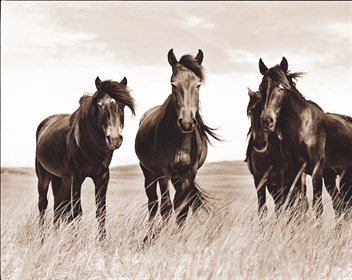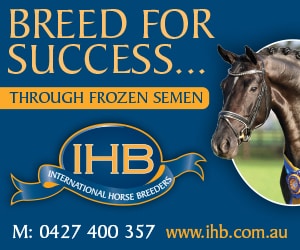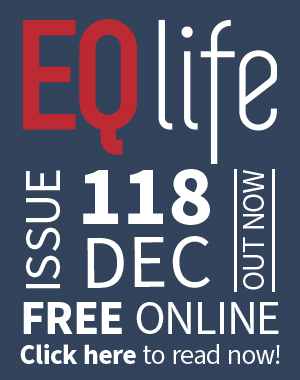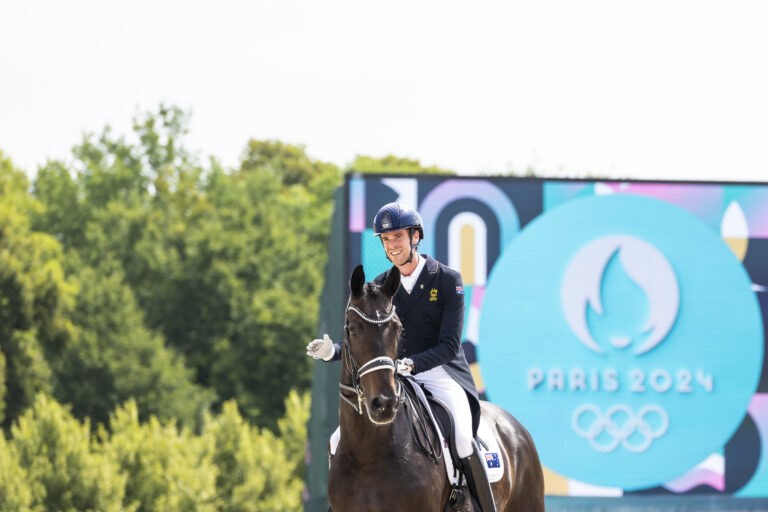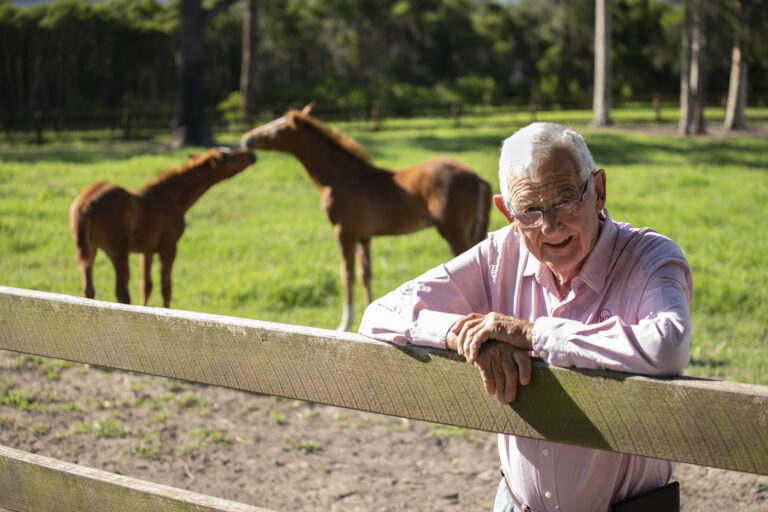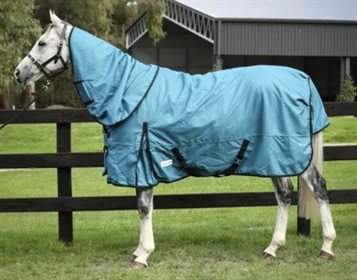This article has appeared previously with Equestrian Life. To see what’s in the current issue, please click here
Wild horses on Sable Island
© 2014 Roberto Dutesco. All rights reserved
By Chloe Chadwick
KNOWN AS THE “Graveyard of the Atlantic”, Sable Island has never been settled by humans. A half-hearted attempt by the French to exploit its seal colonies for fur proved a miserable failure around the turn of the 16th century. Only 11 wild-looking men clad in raw sealskins were found alive in 1603 from the 70 put ashore there five years earlier. Now, after nearly 500 years of shipwrecked sailors, convicts and pirates, only the horses that were abandoned or cast ashore there remain. These horses have been carved by the rugged terrain of their home, hardy and surefooted with their thick coats protecting them against the prevailing, icy winds.
Roberto Dutesco, a Romanian-born Canadian photographer, was captured by both the raw beauty of Sable Island and its character-filled horses, and over the past 20 years the documenting of the Sable Island horses has become his passion.
With a background in fashion photography, Roberto first travelled to Sable Island in 1994 by hazardous plane trip, a journey that would change his life and profession, with Roberto capturing some of the world’s most delicate and remote natural treasures on film.
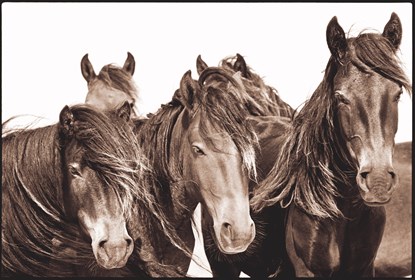
Wild horses on Sable Island
© 2014 Roberto Dutesco. All rights reserved
After a series of expeditions, Roberto came to love the island and its equine inhabitants who, without any natural predators, came to accept his place amongst them. This closeness he achieved to both the landscape and the horses allowed him to document his expeditions through still photography and 16mm film.
With his photographs bringing into focus a place and a horse forgotten by time, Roberto Dutesco discussed with us his incredible experiences.
Sable Island is a 42-kilometre long, 1000-metre wide sand crescent (“sable’’ being French for sand), with the horses living in small herds. Officially protected by the Canadian Government in 1960, the wild horses of Sable Island remain unique in that they are one of the few remaining untouched and unmanaged horse populations in the world today. Their origins are unclear. Many horse lovers say the animals resemble Spanish horses and that they could have swum ashore from a shipwreck, but historians generally believe they were landed there in the late 18th century when the British evicted the Acadian people from Nova Scotia and put their seized horses on the island to breed. By the 20th century they were considered feral and were on the point of being culled before a public campaign, led largely by school children, led to them being protected. The horse is now known as the Sable Island Horse or Sable Island Pony, as they are considered sufficiently genetically unique. They are generally small, 13 to 14 hands, with dark coats and some white markings. About half are bays with the rest chestnut, palomino or black.
When asked what it was about the horses that inspired him to dedicate much of his life to the depiction of their wild beauty, Roberto explains that to him “‘wild’’ is what we are made of! “We forget that deep down beneath all our layers of stuff, beneath many layers of knowhow and preconceived ideas, we are wild, free and very much naked,’’ Roberto says. “The wild horses of Sable Island, residing outside human interference, seem to remind us of that simple fact.”
Roberto believes it is this idea of untouched wilderness that attracts the masses to his gallery today, with his photographic work displayed both in print and in his New York studio inspiring a global community of photography enthusiasts and horse lovers alike. Roberto suggests that his gallery becomes “a sanctuary exclusively dedicated to this documentation, a sanctuary to be shared”. “It is the closest one can get to my 20 years of exploration, the closest you can get to that wild beauty, as you call it. It is also an insight into the future. People want it, and so bringing it out to the world is my mission, inspiring others to look at their own surroundings and listen. The wild world has much to say and we should listen. After all, the horses have been our companions for over 30,000 years.”

foal on Sable Island
© 2014 Roberto Dutesco. All rights reserved
A horse lover at heart, Roberto grew up surrounded by horses from a very young age, primarily riding workhorses on his grandfather’s farm in Romania. He rediscovered this love when he landed on Sable Island’s mist-bathed beaches, finding a native horse full of character with a quirkiness that was a mirror of their island home. “It was their freedom. Their love, affection and curiosity toward me,” Roberto says when asked what it was he saw in the Sable Island horses and tried to capture in their portraits. “A biped stepping on to their unspoiled land. All of that was my inspiration. Spending time alone with them, listening to moments in which nothing had to happen, being part of a long-forgotten microcosm created for the wild in which the wild lives free, unaware and unafraid of man one of only a few places like that in existence it changes you. It has certainly changed me in how I see the world.”
And it has changed how others see it also. Roberto’s words display his passion for the surrounding natural world and yet his actions speak even more loudly of a man determined to let his artistic work speak for parts of the world forgotten in the noise of everyday life. His photographic work has increased public awareness of Sable Island and has resulted in greater protection for the island and its horses, yet with this must come balance, Roberto insists. “The good comes with the bad in some forms. One thing I hope we can all agree with is the simple fact that not one single place in our world, once discovered and conquered by man, has become a better place for it. If we are quick enough and serious enough about both conversation and conservation, yes, a place can be protected because the decision to do so can be made prior to the decision to exploit it. We live in a single world, and awareness through its many forms – particularly in this age of instant worldwide communication – can become significant when it comes down to protection and conservation. There is power in numbers.”
Roberto believes that his previous experience and ingrained respect for horses helped educate and enrich his Sable Island journey, and that this “philosophy helps, and a deep curiosity toward others helps as well’’. “Forgetting what I have learned helps most – a horse is not a horse, as I have found out.” He brings this barebones philosophy when approaching all his photographic subjects, and when asked about the comparisons between his work in fashion and horses, he says horses are no more difficult models than people. “They do not make difficult models! If you go into a subject with a precise idea, the focus is on the energy matter and not on the subject matter. We give names to things since we need to explain. Once you stop explaining the world in words, the veil comes off, and if you are fortunate you might even get a glimpse into eternity. It’s what Sable and its band of wild horses offered me.”
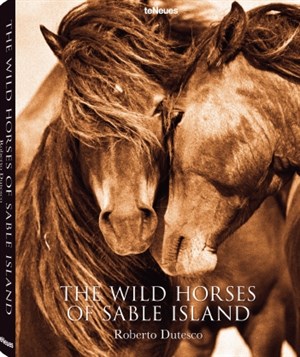
The Wild horses on Sable Island
© 2014 Roberto Dutesco. All rights reserved
It has been over 20 years since Roberto made his first journey to Sable Island, a journey that is still continuing today and has resulted in a collector’s item book, photographic memoir, two films and a gallery that have inspired so many around the globe. When asked how his interpretation and experience of Sable has changed over the years, he explains: “I have changed, the world has changed, the horses have changed, but the island has remained the same – lost in fog, guarding its treasures, its secrets and memories. My interpretation of it has many forms. It’s like love. Does your love for something change over time? Certainly! But not love itself. Sable Island’s complete love is difficult to express in words. That’s why pictures exist. They tell a thousand words – perhaps revealing a moment of what it is, your object of desire, perhaps in that decisive moment when something happens, when you are fortunate enough to capture it, when and if it lets itself be captured. Then further to share with others who are fortunate enough to recognise it for what it is and for what it will always be – at least, to me!”
READ THE LATEST NEWS ARTICLES HERE
